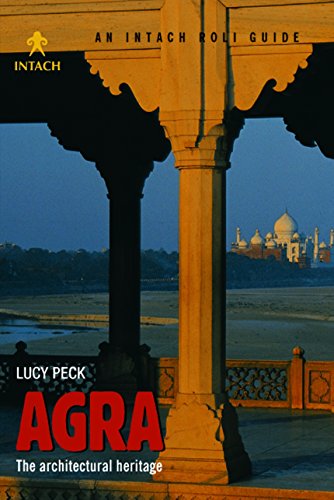Lucy Peck’s new guide is the best and most comprehensive guide of Agra since the classical compilations of S.M. Latif and H.G. Keene of the nineteenth century. Agra, one of the great historical cities of India has become so much the city of the Taj Mahal that travellers visit it merely to see the famous mausoleum. Foreign visitors typically come down from Delhi by train, bus or car and, after having seen the Taj, taken a meal in one of the hotel restaurants and having bought some souvenirs, leave the city again on the evening of the same day. Only a few spend as much as a night there, and hardly anyone is aware of the wealth of historical monuments that testify to the days of the city’s past glory when it was the major capital of the Mughal empire, and, after that, a regional headquarters of the British colonial administration. In the 17th century, foreign travellers described Mughal Agra as a wonder of the age—as much a centre of the arteries of trade both by land and water as a meeting-place of saints, sages and scholars from all Asia, and full of fine buildings, palaces, gardens, and mausoleums.
The German traveller Johann Albrecht van Mandelslo judged it in 1638 at least twice as big as Isfahan, others felt that it was one of the largest cities in the world. The nucleus of Agra was formed of gardens of the ruling elite lining the river Yamuna (then called Jaun, also Jamna), on both sides, the remaining city encircled it in the West. The centre of Agra had thus a suburban character and the Taj Mahal was not built in an isolated site, but as part of this splendid riverfront city. The Yamuna was the main artery and one would go by boat from one garden to the other.

